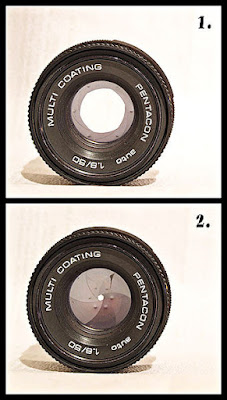
The maximum aperture tends to be of most interest, and is always included when describing a lens. This value is also known as the lens "speed", because it affects the exposure time. The aperture is proportional to the square root of the light admitted, and thus inversely proportional to the square root of required exposure time, such that an aperture of f/2 allows for exposure times one quarter that of f/4.
Lenses with apertures larger than f/2.8 are typically known as "fast" lenses, though this has changed historically (in the past, larger than f/6 was considered fast, for example by the 1911 Encyclopaedia Britannica). The fastest lenses in general production are f/1.2 or f/1.4, with more at f/1.8 and f/2.0, and many at f/2.8 or slower; f/1.0 is unusual, though sees some use.
APERTURE AREA
The amount of light captured by a lens is proportional to the area of the aperture, equal to:
Where f is focal length and N is the f-number.
The focal length value is not required when comparing two lenses of the same focal length; a value of 1 can be used instead, and the other factors can be dropped as well, leaving area proportion to the reciprocal square of the f-number N.
If two cameras of different format sizes and focal lengths have the same angle of view, and the same aperture area, they gather the same amount of light from the scene. The relative focal-plane illuminance, however, depends only on the f-number N, independent of the focal length, so is less in the camera with the larger format, longer focal length, and higher f-number. This assumes both lenses have identical transmissivity.

No comments:
Post a Comment